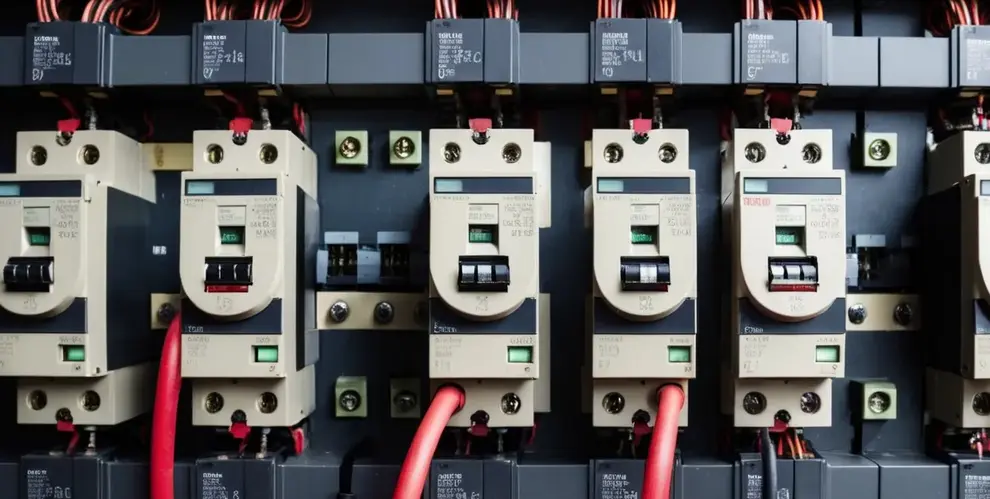Like a steadfast sentry standing guard, the aptly named air breaker circuit breaker continuously monitors electrical systems, ever ready to instantly intervene at the first sign of trouble. Companies like JET Hotel Solutions (https://www.jethotelsolutions.com/) offer air breaker circuit breakers designed to protect the sensitive infrastructure of hospitality properties.
As modern structures brim with sensitive equipment and human occupants, safeguarding buildings requires safeguarding energy flow. When voltages spike, circuits overload, or sudden shorts strike, these indispensable protectors isolate hazards in a split second. Their speed, sensitivity, and reliability provided the foundation for utilizing electricity at industrial scales.
Yet for all their prowess policing currents, these devices still remain mysterious to many facility managers.
Learning what air breaker circuit breakers are, how they function, and where to install them keeps infrastructure integrity and safety a top priority.
The Vital Role of Air Breaker Circuit Breakers
Air breaker circuit breakers primarily excel at two crucial tasks within electrical distributions systems—they disconnect circuits the instant potentially hazardous abnormalities occur and they reconnect circuits once the faults clear.
Speed lies at the heart of their effectiveness. By rapidly limiting damage from shorts and overloads, breakers prevent fires, equipment destruction, power outages, and human injuries.
They also allow power restoration in equipment the moment the transient issues pass.

After contacts separate and alerts announce the interruption, breakers stand ready to close again upon manual resets or self-check reconnections. This ability to both break then seamlessly make circuits gives the technology its name and endless utility across industries.
How Air Blasts Extinguish Deadly Arcs
Managing arcs represents air breaker circuit breakers’ most crucial role. Arcing occurs when electric current bridges separated contacts during a fault interruption attempt. The sustained discharge concentrates tremendous heat between the contacts, potentially melting wiring insulation and surrounding materials. Arc flash mishaps account for nearly 80% of electrical accidents annually.
Air breaker breakers, however, strategically employ pressurized air to push arcs away from contact points into partitioned arc chutes. As the arc elongates within the zigzagging barriers, it cools then splits until scattered currents dissipate harmlessly.
Air cooling and magnetic blowouts within the maze-like passages facilitate rapid quenching well before arcs endanger infrastructure. Eliminating not just curtailing arcs lets air breakers handle much higher short circuit capacities than other trip devices.
Maximizing Protection Through Air Breaker Selection
While air breaker circuit breakers share arc extinguishing basics, numerous design variations suit the unique risk profiles of individual facilities. Choosing well-matched options comes down to three key criteria:
Interruption Ratings – Circuit voltage and available fault current levels dictate required insulation and short circuit withstanding capabilities.
Speed – The quicker breakers react to overloads and initiate arc interruption, the less likely fire, equipment, or human injuries will occur.
Sensitivity – More sensitive electronic or magnetic trip elements activated by lower abnormal current increases or faster temperature rises improve selectivity.
Infrastructures with higher hazard levels need faster speeds and greater interrupting capacities. Facilities with multiple interconnected circuit branches benefit from sensitive settings mitigating cascade overloads. Once risk assessments identify probable trouble spots, breaker capabilities can address those weaknesses.
Maximizing Protection Through Air Breaker Selection
While air breaker circuit breakers share arc extinguishing basics, numerous design variations suit the unique risk profiles of individual facilities. Choosing well-matched options comes down to three key criteria:
Interruption Ratings – Circuit voltage and available fault current levels dictate required insulation and short circuit withstanding capabilities.
Speed – The quicker breakers react to overloads and initiate arc interruption, the less likely fire, equipment, or human injuries will occur.
Sensitivity – More sensitive electronic or magnetic trip elements activated by lower abnormal current increases or faster temperature rises improve selectivity.
Infrastructures with higher hazard levels need faster speeds and greater interrupting capacities. Facilities with multiple interconnected circuit branches benefit from sensitive settings mitigating cascade overloads. Once risk assessments identify probable trouble spots, breaker capabilities can address those weaknesses.
Installation and Upkeep Rule Breaker Longevity
Successfully taming electrical threats relies on both selecting appropriate air breaker circuit breaker models and positioning them strategically throughout complexes. While rated capacities align device capabilities with anticipated fault levels, locations also matter greatly. Voltage types, noise, moisture, and temperature fluctuations differ across buildings. Areas with extensive electronics need breakers preventing voltage spikes. Critical life safety pathway supplies demand the highest speed and durability options.
To sustain performance, experts recommend testing breaker functioning at least annually.
Simple manual trip checks confirm internal components still engage appropriately. Breakers exceeding 85% of rated capacities may require replacements to avoid failures during major faults. Keeping detailed maintenance logs tracking testing dates, technician notes, and part replacements ensures peak responsiveness when catastrophic faults strike.
Air Breaker Circuit Breakers – Indispensable Protectors
Rarely does such a compact technology shoulder such an enormous infrastructure responsibility. Yet air breaker circuit breakers capably cut catastrophic electrical hazards down to size. Their speedy reactions isolate dangers in millionths of seconds. Arc chutes snuff those arcing menaces in millionths of inches. And self-restoring capabilities return power the moment threats pass.
This tireless triple threat keeps facilities functioning day and night through storms, grid fluctuations, equipment mishaps, and human errors. Recognizing why and how air blast breakers work their protective magic makes deploying them a sure way to safeguard any enterprise.
